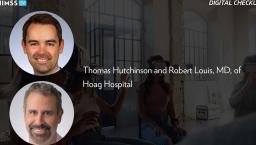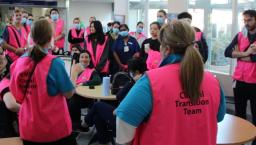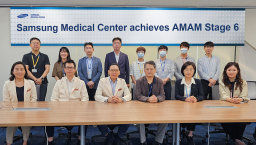Intermountain to lead AI-driven research aiming to improve care for critically-ill patients

Photo: Luis Alvarez/Getty Images
As part of the National Institutes of Health's Acute Respiratory Distress Syndrome, Pneumonia and Sepsis Phenotyping Consortium, Intermountain Health will help lead the use of artificial intelligence technologies to better understand the dissimilarities and underlying mechanisms of critical illness syndromes in order to foster a new treatment paradigm.
WHY IT MATTERS
A new NIH grant of $51.6 million grant will fund the APS Phenotyping Consortium researchers from 22 hospitals across the U.S. in order to develop more precise treatments for ARDS, sepsis and pneumonia.
Last year, NIH formed the consortium, collaborating through a clinical coordinating center at Vanderbilt University Medical Center for a six-year period, to study biospecimens of hospitalized adults with one or more APS syndromes.
The consortium will start enrolling patients by early 2024 with the goal of enrolling 5,000 patients in the next five years and will phenotype ARDS, pneumonia and sepsis cases to identify subtypes, according to the announcement.
Dr. Samuel Brown, vice president for research and research professor at Intermountain Health and principal investigator of the Intermountain-led InterACT Center within the consortium, said that this is a radically different way of approaching patients.
"It’s as if we’ve been looking at apples and oranges and watermelons, and treating everyone as if they were apples," he said in the announcement.
The scientific community has been searching for effective treatments for ARDS and sepsis patients for more than two decades and "without much success," he said.
"Part of the problem is that we’ve been imprecise, and assumed everyone is the same and will respond to the same therapies. But they clearly don’t. The disease syndromes often differ from patient to patient. We need to better understand the meaningful patient subgroups in order to identify effective treatments."
The researchers will perform blood and genetic tests and track patients’ progress and outcomes. Then, use advanced analytics, AI and ML to identify patient types – and actionable targets within each type – for future clinical trials.
In addition to Intermountain and VUMC, NIH named the University of California San Francisco, the University of Colorado, the University of Michigan and the University of Pennsylvania as lead sites for the study.
THE LARGER TREND
According to Intermountain's announcement, ARDS and sepsis are most often caused by pneumonia and have up to a 50% mortality rate.
There are few effective therapies. During COVID-19, hospitalized patients in critical condition ultimately died from these conditions, and each year these syndromes take lives in every hospital.
Sepsis, for example, affects approximately 1.7 million U.S. adults annually, according to research published by JAMA Network Open.
It also presents in varied ways and across all populations, "from the neonate in the NICU to an adult trauma patient," according to Dr. Peggy Duggan, executive vice president and chief medical officer at Tampa General Hospital.
Using predictive analytics, Tampa General decreased its sepsis early death rate from 6% to 4%.
"We looked at the data and determined we needed a consistent tool to support the clinical staff with real-time, solution-oriented processes that aggregate and prioritize sepsis-specific risk data," she told Healthcare IT News in May.
Using the data generated by its command center system, which monitors the location, care and status of every patient within the hospital, as an early warning system for potential sepsis cases, the hospital achieved earlier intervention 50% more often.
"For sepsis, early intervention saves lives – every minute counts," said Duggan.
"When the patient receives appropriate pathway-based care, their mortality is reduced from 23% to 7.5%."
The federal government is funding other uses of predictive algorithms, including analyzing biometric data from commercial wearables for disease prediction.
ON THE RECORD
"We need to be more precise and bring true precision medicine to these critically-ill patients," Brown said in a statement.
Andrea Fox is senior editor of Healthcare IT News.
Email: afox@himss.org
Healthcare IT News is a HIMSS Media publication.
























